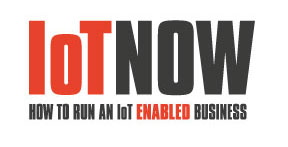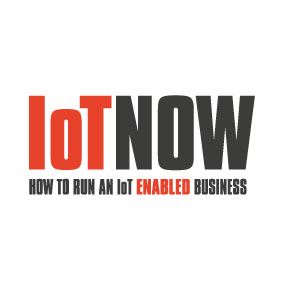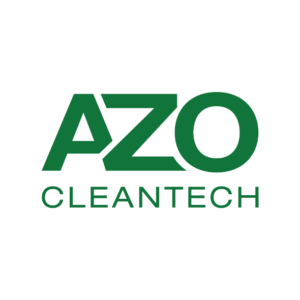 Aeternum was featured in Iot Now’s Trending Tech podcast. The discussion involved air pollution in the UK and what Aeternum is doing to monitor and help understand the severity. You can listen to Aeternum’s CEO, Dr. Paul Carter, interview here, or take a look at the transcript below:
Aeternum was featured in Iot Now’s Trending Tech podcast. The discussion involved air pollution in the UK and what Aeternum is doing to monitor and help understand the severity. You can listen to Aeternum’s CEO, Dr. Paul Carter, interview here, or take a look at the transcript below:In the latest Trending Tech Podcast Jeremy Cowan talks to Shaun Cooley about using machine learning to map buildings and get the best from them.
And in the wake of the COP26 climate conference, Dr. Paul Carter tells us how we can cut air pollution worldwide with a low-cost, low-power, end-to-end solution on secure wireless networks. Plus, does Facebook know it’s taking on some bad metaverse baggage with its new name Meta? How do we regulate tech when legislators don’t even understand Insta? And your old phone may be worth more than you think!
Hi and welcome to the latest Trending Tech Podcast brought to you by IoT-Now.com, VanillaPlus.com and The Evolving Enterprise. I’m Jeremy Cowan, co-founder of these three technology sites. And it’s our pleasure to bring you two really interesting guests from the Internet of Things.
They are Mapped, a US-based company you will find at mapped.com and Aeternum. I’ll spell that, that’s A E T E R N U M, based in the UK and found at Aeternum.co.
Well, Mapped started out with the question, “What if every built space had an API, or application programming interface?” Because up to now, getting data out of buildings has been a complex, time-consuming, and often manual process that can take weeks or sometimes even months of work. So, to solve the problem, Mapped has created a knowledge graph – and I’m going to have to ask what that is – of people, places and things using machine learning to automate the process of data extraction and identification. Mapped then built a simple, secure and unified API on top.
The result? Well, the result is that now anything generating data, whether it’s devices, sensors, enterprise applications, or whatever, is accessible quickly, easily and securely. So, it’s great to be able to welcome the company’s CEO, Shaun Cooley, who is joining the podcast from California. Shaun, welcome to the Trending Tech Podcast.
Shaun Cooley 01:51
Glad to be here. Thanks for having me, Jeremy.
Jeremy Cowan 01:53
Great to have you. And our next guest today is Dr. Paul Carter, founder of Aeternum, a provider of low-cost, low-power sensors designed to accurately monitor air quality. I should add, Paul is also the owner of Global Wireless Solutions, an independent benchmarking solution vendor for the wireless network industry. And with more than 30 years’ experience in cellular networks, Paul Carter founded Aeternum, to challenge – as he puts it – outdated and inadequate approaches to addressing the problem of air pollution, by providing a complete end-to-end solution connected by secure wireless networks. Paul, it’s great to have you here, too.
Paul Carter 02:41
Thank you, Jeremy. It’s a privilege to be with you.
Jeremy Cowan 02:43
Well, thank you, gents. Am I right to say that we find you Paul in Virginia, USA.
Paul Carter 02:49
That’s right, Northern Virginia right now, post post-election.
Jeremy Cowan 02:52
So, it’s a truly US-led pod today. Now, we generally start with an item of tech news to share with the audience. Paul, let me come to you first. What have you seen in the tech news?
Paul Carter 03:04
So, as we probably all know, COP26 (26th UN Climate Change Conference of the Parties) started up this week. And there was, and we’re actually participating there. But there was an interesting story I noticed about COP26, related to a bunch of healthcare workers in the UK, cycling up from London, to Glasgow, which is I think, about 500 miles. Basically, to not just talk about the climate change issues that people are focused mostly on at COP, but also air pollution, because for me, that’s perhaps even more significant and more immediate and more concerning than the climate change itself. And so, I thought that was really interesting that the healthcare professionals are really starting to sort of step up on this. I think at the end of last year, towards the end of last year, there was a landmark UK court ruling that suggested that air pollution contributed to the death of a young girl back in 2014. So, it’s a topic of significance today.
Jeremy Cowan 04:03
Yeah, and a global significance. It doesn’t matter if you’re in the developing or the developed world. This is something that affects us all, isn’t it?
Paul Carter 04:11
That’s right.
Jeremy Cowan 04:12
Shaun, what was your thought on that? It’s an area that is getting an increasing amount of coverage.
Shaun Cooley 04:19
Yeah, absolutely. I think it’s great that a group of folks cycled there. I think most of the news that I’ve seen about COP26 is all of the leaders of industry taking their private jets to get there. So, hopefully the folks cycling offset some of the private jets that went into, to COP26. Yeah, I think in general, the IoT (Internet of Things) space is driving a lot of awareness of the air quality. You know, companies like Paul’s and others, that are building fantastic sensors that can read all of this data is getting us a lot of descriptive analytics, a lot of information about how things are currently happening and insights into the past. And I think over time, those will lead to a lot more predictive and prescriptive analytics, where we can start to predict and hopefully control the future around this. But you know, we see not just air quality, I’m in California, so lots of fire hazard data coming in as well. Satellites, monitoring ground movement and dryness and fires and helping to predict and go after things that are really, you know, becoming the outcomes of climate change. And so, lots of great tech going into this these days.
Jeremy Cowan 05:42
It is amazing that some of these global leaders don’t see the irony of bringing 400 private jets to a global climate conference. And one of them I understand, had a journey of 31 miles. It’s breathtaking. Almost literally. Shaun, what was your take on the tech news out there?
Shaun Cooley 06:02
Yeah. For me, I think over the last week and a half, we’ve seen three major companies come out with metaverse announcements, you know, for all of us who have been in tech for many decades it’s a little funny to see the rebranding of virtual reality and metaverse. You know, it started with Cisco a week and a half ago announcing WebEx Hologram, which is really meant to be a real-time holographic collaboration. You know, WebEx came out with essentially a new camera sensor that can basically do what Zoom is doing here with my virtual background, but in 3D, so that it just pulls me out as a person and makes it available on whatever headset you happen to be using on the other side.
The interesting part about that is you know, you can hold up objects and you know, show people what you’re what you’re holding and seeing in real time, and they can see the same thing. Facebook, now Meta, rebranded the entire company around this concept of the metaverse, really pitching this persistent shared 3D virtual space that creates a virtual universe across everybody that’s participating in it. Yeah, I think it’s an interesting future. I can’t see myself living with a headset on for very long. (Laughter)
And then you know, Microsoft earlier this week started talking about the metaverse as well. Their take was embedding computing into the real world and the real world into computing. Microsoft does a little bit of VR (virtual reality), a lot of AR (augmented reality) with their HoloLens goggles. And weirdly on the Microsoft one, nobody has legs in the virtual universe.
Jeremy Cowan 07:45
I noticed that.
Shaun Cooley 07:47
But everybody is just a torso and a head, which is a little strange to me. But yeah, lots of really interesting things around the metaverse in the last week and a half.
Jeremy Cowan 07:56
Yeah. Paul, any thoughts on what you’ve been hearing about the metaverse?
Paul Carter 08:02
Well, you know, all of those companies that Shaun talked about, I mean, they obviously provide a lot of different solutions in a lot of different areas. One of the things that we have with my other company, Global Wireless Solutions, we have a an online panel, where we have tens of thousands of people across the US, we’re looking at their app usage and seeing how people use their phones these days. And, you know, it’s interesting, obviously, all these tech companies are evolving and changing their solutions along the lines that Shaun was saying. But, fundamentally, these have to provide some sort of service and Facebook went down recently, and actually went down again yesterday, I think. So, the reliability of these apps or these services, actually it’s calling into question to some degree what they can deliver. So, they’re always forward looking and always trying to, you know, push the envelope as it were, but at the same time, basic communications is still what a lot of them need to continue to focus on. And that to me is surprising that here we are in 2021 and five 9s, six 9s, seven 9s (reliability), we’re sometimes at three 9s still.
Jeremy Cowan 09:16
Exactly. Yeah, I mean, particularly if you’re talking about industrial applications, you know, five 9s has got to be an absolute basic minimum. That’s like table stakes, isn’t it? And the thought that, you know, Facebook, and its VR apps is down for a day is just completely untenable.
I make no apology for continuing with the thread of Glasgow and the COP event. Because there’s a great article this week on VanillaPlus.com by, I think, one of the best IT journalists in the UK and possibly Europe at the moment. I’m proud to say that Tony Savvas who is a friend of ours, writes on a weekly basis for VanillaPlus, and he has an article this week called “Good COP, bad COP: Are telcos meeting the climate challenge?” and, you know, happily for once it’s not all doom and gloom as so many other stories coming from the early stages – less so lately – of the global climate conference in Glasgow have been. You’ll find his report on the VanillaPlus homepage. And in it, ecoAct, which is an ATOS subsidiary has just released its Climate Reporting Performance Assessment for companies in the stock indices, including FTSE 100, the Dow 30 and EuroStocks 50. And Tony Savvas points to a leaderboard ranking the top 20 companies for climate disclosure, lifting the lid on sustainability reporting, Net Zero commitments and science-based targets. And it surprised me – I don’t know if it surprises you – that the IT and telecom space was the strongest performing sector globally across these three indices with six companies in the top 20. And this included Microsoft and Apple, so it’s not a straight telco story. But it turns out that almost 90% of ITT (internet technology and telecom) companies now offer low carbon products or services, and 71% have set science-based targets for their emissions, with most of them committing to the aim of helping to limit global warming to one and a half degrees centigrade. I think in the FTSE 100 alone, Vodafone was the second top performing company. And BT was in third place. Paul, did you see that? Is that surprising to you?
Paul Carter 11:46
I hadn’t seen it. But I mean, to some degree, in a sense, it’s not surprising because obviously, you know, telecom or technology companies have to think about this whole area, obviously, perhaps more so than some of the perhaps more bricks and mortar type organisations. I mean, obviously, when you run an organisation that’s for profit, the goal is to make profit. And these days now, there are a lot of other considerations that people have to have with diversity and ESG (environmental, social and governance) considerations, right. So, it’s important, obviously, to think about the future. Again, as I said, this court rolling about this young girl who died because of respiratory problems, that’s in a sense a wake-up call to a lot of organisations that actually need to think about their contribution to the air quality that we live in. So, to some degree, that’s not a surprise. You know, we’re working with O2, for example, in COP26 and they’re working with the Smart Mobility Living Lab, as well to try and figure out how to use their technology, 5G for autonomous vehicles and for a more sustainable environment. And so I think a number of these companies have developed now a clean agenda. And, you know, they’re focused on that the good news is right, you don’t need to start Day One with a completely carbon neutral footprint. I mean, you because you just can’t. And so I think the first step is, like an alcoholic in a way, is to sort of identify what is going on, what you are doing, and to figure out how you can improve upon that. So I think that that’s really the stage, if you like, that we’re at to be honest.
Jeremy Cowan 13:22
Shaun, anything you’d add to that?
Shaun Cooley 13:24
Yeah, I think Paul’s right on. You know, these technology companies, through both shareholder pressure around ESG, you know – especially a lot of the large institutions that have invested in these companies, they’re expected to publish ESG statistics in their quarterly and annual reports. You know, they are really held to account on how much they’re affecting the environment. And I think further, we can look back probably 15 years at this point, when Google announced their net zero mandate, you know, and that was that all of their their data centres worldwide would be net zero, from an energy and carbon standpoint. You know, it’s something that my past, when I was at Cisco, Cisco spent a significant amount of money on making sure that our supply chain was cleaned. You know, we were putting a lot of effort into anti-rhino poaching. You know, there’s just a lot of a lot of directions that these tech companies go in, really to service the ESG and overall sustainability goals of both the employees and the shareholders of these companies.
Jeremy Cowan 14:37
Yeah. Well, we’ve got to the bit of the podcast where we find out a little bit about what motivated both of your businesses. Shaun, staying with you. Could you tell me a bit about how you identified the need for Mapped?
Shaun Cooley 14:53
Yeah, absolutely. So before mapped, I was the Vice President and CTO for Internet of Things at Cisco. So spent a lot of time walking factory floors going down in mines, out on oil rigs, roofs of buildings, pretty much anything I could get a customer to come and show me. And in large part, almost every one of these large industrial commercial IoT deployments was struggling to get data. You know, they would build a solution for one of their factories. And it turned out the factory across the street was entirely different, all as we call them now, unique snowflakes. And so, you know, they would have to start from scratch again to go and get the data out of the next factory and the next factory.
And so, the goal of Mapped was that there should be a data infrastructure layer, there should be an independent data layer that is solely responsible for the discovery, extraction, normalisation of data coming out of these environments. And that if you can present it through a single API to developers, now the developers can build applications once and run them anywhere. So, we’ve been at this for about two and a half years now, and are quite happy with the progress along the way.
Jeremy Cowan 16:03
Well, that’s a very succinct way of putting it. What does Mapped now do differently from any competitors that are out there?
Shaun Cooley 16:13
Yeah, I think for most of the IoT market, you’ll find that system integrators, especially on the industrial, industrial and commercial side, system integrators are the ones who do all the heavy lifting of reverse engineering and environment to understand all the equipment, the systems, the processes that are in place in one of these environments, and creating dashboards, analytics, whatever it happens to be that the customer is asking for. Our change on that is that we’re using a bunch of network security techniques to discover and extract data out of these environments. And then we’re automating the reverse engineering, so that we can produce that normalised API, that normalised set of data without needing to send people into the environment.
So, what the people used to do on the reverse engineering side is now automation machine learning. And to be totally clear, you know, the people are still needed to build the environments and commission the environments. We’re just taking the work that they did, and trying to understand it through automated means, in order to create that normalised data layer. And so our real differentiator is just in that automation machine learning, versus sending armies of people in to go and do this work.
Jeremy Cowan 17:25
So who now are your target groups of customers? Are they the construction industry? Is it building maintenance engineers or somebody else entirely?
Shaun Cooley 17:34
Yeah, today, we target what we call brownfield, so existing buildings. New construction for a start-up is a little too far off for us. And so, you know, most of our focus today is on large, classic commercial office buildings. There’s over a trillion square feet of them worldwide. Those large Class A commercial office buildings tend to be major contributors, sticking to the theme today, to pollution and climate change, right – air conditioning, heating, people coming and going, vehicles entering and exiting the building. There’s a lot going on inside of these buildings and the sensor data coming from everything from elevators, occupancy sensors, lighting, access control systems, surveillance, security, parking garage systems, even the irrigation systems, all contribute to ways that we can better understand and better operate these environments. And so, our typical target is going to be the owner and operator of large portfolios of buildings, whether it is somebody like a tech company, that maybe occupies a couple of hundred buildings or large owner operators like CBRE or Tishman Spire that is operating and managing these buildings.
Jeremy Cowan 18:54
What can we expect next from Mapped, Shaun?
Shaun Cooley 18:59
Yeah, I think, moving beyond buildings, you’ll see us start to tackle other industries as well. You know, the platform that we’ve built is really designed around bringing data in on one side and producing a normalised ontology on the other side. And so we will continue to expand that ontology, expand our way of describing things to include systems and connections that exist in things like manufacturing, oil and gas, and energy production facilities, and even smart cities. And then, you know, start to bring those connectors in, to pull in from data sources that exist in those other environments as well.
Jeremy Cowan 19:37
Thank you, that really helps. And I’m sure there’s an awful lot of detailed information that our listeners might like to get access to. Where would they find that? Is it all at mapped.com?
Shaun Cooley 19:50
Yeah, It’s all at mapped.com. And, you know, if you’re interested, reach out to us. We’re always happy to have a conversation and understand your needs, and see where we can help.
Jeremy Cowan 20:04
Really good. Thank you, Shaun.
Paul, turning to you, I was intrigued to hear about what Aeternum is doing. Could you describe for the listeners what the key objective for the company is?
Paul Carter 20:15
Yeah. So, if you look in the UK right now, the government’s DEFRA has about 300 monitoring stations around ….
Jeremy Cowan 20:22
DEFRA? Could you just explain that?
Paul Carter 20:24
The Department of Environment, Fisheries and Rural Affairs, right. It’s a government organisation; they have about 300 monitoring stations, air quality monitoring stations around the UK. And those are in place for compliance, to make measurements about whether it’s gases or particulate matters, to make sure that the UK is in compliance with … I think they follow EU standards, but the World Health Organization (WHO) also has their own standards in this space, but 300 across the UK. And you know, just last week again, the Asthma UK and British London Foundation, I guess in preparation for COP, revealed that they believe that 250,000 children in the UK were born in 2019 in areas where the PM 2.5, which is particulate matter 2.5 microns, breached their World Health Organization 2005 guidelines.
Jeremy Cowan 21:24
Wow|
Paul Carter 21:25
So, those are probably based on these 300 monitoring stations, and these monitoring stations are very accurate. And they’re quite large. And in a city, you know, you just do the math, there’s just a just a handful, probably two or three in a regular UK city. But obviously the UK cities are quite large. And, as I do with my other company Global Wireless Solutions, we make measurements on wireless network performance for to evaluate the network performance. And what we find as we drive around different areas of the UK and everywhere have different levels of signal strength, as you know, you might be in an area where one minute you can make a call, and the next minute, you can’t.
Well, it’s the same thing with air quality within a city or within rural areas or wherever; one area could be perfectly clear, fine, and another area could be problematic. Also the problem even worse in air quality is that that air quality may change dramatically during the day because of traffic, or construction, or factories, or ships going by, whatever. There’s like any number of causes for the air quality to change. So, we felt that we needed to come up with a way of being able to deploy a whole lot more air quality monitoring stations that have to be a lot more mobile, have to be a lot lower powered, and have to be able to be sustainable powered. Obviously, being sustainable is good these days from a climate change perspective. But more importantly, even, it allows us to move them around as needed quickly. So that we can make measurements, just wherever we want, with the idea of being able to put these air quality monitoring stations up, literally in a matter of minutes. And move them if needs be. That’s essentially the premise and because of IoT, because of the availability now of low-powered networks, we obviously need to be able to send data back that we collect at the sensors, we need to send it back somewhere into the cloud. And now we can do that with the commercial networks of LTE Cat-M or Narrowband IoT, or even the networks that people deploy themselves, like LoRa WAN networks, which are even more low-powered, but they’re often private networks. But again IoT is enabling us essentially to go out and to deploy these sensors, and either leave them where they are indefinitely or go back and move them around.
Jeremy Cowan 24:11
Well, you’ve anticipated my next question, which was how you go about doing this? So, what is different about Aeternum’s offering from what else is in the market?
Paul Carter 24:21
Well, I think there are a number of other sensors and the key, obviously, is to make accurate measurements when you’re doing this, you don’t want to be just going out and making random measurements. And so you need to have accurate measurements. But the cost of it needs to be low enough that you can deploy a lot of them in an area. And we believe the real USP here is the fact that they don’t need to plug into mains power, that we can literally survive indefinitely. Because, obviously, the sensors themselves they have fans and they use quite a bit of energy, let’s say relatively speaking, compared to sort of, you know, a thermometer or, or air pressure and that sort of thing. And so they need to generate quite a bit of power. So, we had to work to get them to be sustainable. That really, I think, is the USP, but that gives us the flexibility then to really address lots of different environments and to really be sure that when we’re getting the data, it’s what we need it to be.
Jeremy Cowan 25:28
Yeah. And finally, what is it that you’re doing at COP26 in Glasgow, the meeting we’re talking about?
Paul Carter 25:35
Yeah, we’ve got a couple of efforts, actually. One is we’re actually in a piece of land just alongside the motorway there. And we’re working with an organisation called Class Of Your Own. So, in that case, we have a couple of sensors in a piece of land where hopefully the delegates are walking by and they’re seeing the activity that schoolchildren are involved in. But there we’re making measurements of NO2 and particulate matter. And we’re making that data available through an API so that schoolchildren can understand the data. And they can participate in the programme, and the process because obviously, the future generation STEM (Science, Technology, Engineering & Maths) it’s crucial to get people engaged at a young age in these types of areas. But we’re also in a booth with the GSMA and O2 and the Smart Mobility Living Lab, where they’ve got their autonomous car and SMLL, which is based in London. They’re the folks that have a lot of sophisticated equipment on lampposts in a couple of areas of London, where they’re monitoring autonomous cars as they go through the streets in Woolwich and Queen Elizabeth Park. So, where they have their lampposts with all their sophisticated monitoring equipment, we’re also starting to place now some of our own sensors so that we can start to monitor again NO2 and PMs.
Jeremy Cowan 27:05
That’s fascinating. So, if people want to find out more about this pool, where do they go?
Paul Carter 27:09
To our website which is https://Aeternum.co . Aeternum, by the way, is Latin for forever. The whole idea is that we can keep this going forever, and that we ourselves I guess will live forever, although perhaps not. But anyhow, the idea is that that’s sustainable forever.
Jeremy Cowan 27:26
Well, thank you for not exposing the shortcomings of my Latin. Gentlemen, there’s just time for our What The Tech section where we touch on any tech news that’s either amused or amazed you. Paul,what have you seen?
Paul Carter 27:39
Again, my other business is we test wireless networks, and we’ve been doing that now for 25 years. So, we do that using phones, smartphones, well, these days smartphones. But I saw a very interesting article that was, I think, at loveantiques.com. They’re saying, basically, that your old mobile phones are actually worth something these days. And, matter of fact, if you have a pre-production iPhone 1, that’s worth more than £10,000. Of course, I’m not sure how many people have pre-production iPhone 1s. (Laughter) And they list their top 10 list; actually, you know, I don’t, to be honest, recognise many of those models. But we’ve sold or thrown out a lot of devices over the years. This is a podcast, unfortunately but in front of me I have a either i370 here.
Jeremy Cowan 28:29
A bit of a brick.
Shaun Cooley 28:31
Yeah, one still took a full-size SIM card.
Paul Carter 28:36
This is a Motorola device. This was the first 3G phone that we tested on the Three network in the UK. Then, of course, there was this time when the phones went small and had like this ….
Jeremy Cowan 28:46
Started flipping.
Paul Carter 28:49
…. and doing different things.
Jeremy Cowan 28:50
I noticed my 5310 wasn’t on the list. Yeah.
Paul Carter 28:52
Then got even smaller. So and then now of course, they all basically look like this. I mean, they all like an iPhone or a Samsung Galaxy. So, it’s funny how we went through like big, small, small, small and then now sort of pocket size. But yeah, I thought that was quite interesting and amusing.
Jeremy Cowan 29:10
Shaun, what caught your imagination.
Shaun Cooley 29:13
I hate to stick to the exact same topic but the metaverse for me is just, it’s a little mind-blowing. And, you know, I this week with NFT NYC I don’t know if anybody followed any of the news coming out of you know, NFTs obviously being this sort of Web 3.0, you know, Blockchain way of trading our ….
Jeremy Cowan 29:38
These are the non-fungible tokens, yeah?
Shaun Cooley 29:40
That’s right, non-fungible tokens. There was a New York convention that happened this week for it and just a lot of wild, you know, photos and news coming out of NFT NYC this week
Jeremy Cowan 29:54
Sorry, just to interrupt for anybody that doesn’t know the NFT, is that that’s a kind of way of trading or buying ownership or at least a share at any rate in an artwork or a piece of intellectual property?
Shaun Cooley 30:10
That’s right. And, you know, we’ve seen artists release everything from, you know, digital art to photographs to, you know, movies, I think, a rap group. There’s been a bunch of even music that’s gone out as these, you know, it’s sort of a one-off. There’s supposed to only be one of them in the world, and you can prove that there’s only one and that you own that one, you know, on the blockchain. The NFT NYC event this week looked like a bit of a mix of Burning Man and New York, you know, just lots of physical arts moving around through New York City to represent virtual art. And this mix between what’s physical, what’s virtual, were people willing to pay for things, really caught a lot of my attention this week.
Jeremy Cowan 31:06
I find it amazing that anybody’s prepared to hand over money for something like that, that they think they have ownership, but actually, they don’t. Yeah, you don’t get the rights to it.
Shaun Cooley 31:15
I’ve read a lot of arguments, you know. I think I very much agree with you. It’s a weird thing to pay for a certificate saying you own a JPEG that is like, available anywhere on the web, and people can make as many copies of it as they want. But you have a certificate saying you own the true, one and only, which is a little strange. You know, I guess the physical art world works the same. You know, you can buy an original of a piece of art for many millions of dollars, and you can buy a bunch of replicas of that piece of art. And it is, I guess, important to the person that paid the millions of dollars that they have the original one of it hanging on there, you know, now Metaverse virtual wall. So, you know, very, very interesting type of concept. And, you know, I think maybe we’ll all …. I think in five years, we’ll either all be laughing at it that it ever existed, or we’ll probably start taking it seriously at some point. (Laughter)
Jeremy Cowan 32:13
Yeah, they might have to get by without me. But anyway. I don’t want to leave without completely rinsing this metaverse story, because I think there’s plenty in it and probably we’ll come back to it at some point. But there was a really interesting story that made me smile, although I can’t honestly say It surprised me. And it’s on the bbc.co.uk website. It’s headlined “Facebook’s Metaverse plans labelled as ‘dystopian’ and ‘a bad idea’.” (Laughter)
And the thing about it is it’s one of Facebook’s earliest investors. So, get your head around that if you can. Roger McNamee told the BBC that he thinks the metaverse approach that Facebook is taking is a bad idea. And the fact that we’re all sitting and looking at this, like it’s normal should be alarming everyone. Mr. McNamee also changed his views about Facebook when he saw levels of in misinformation on the platform growing. So, you know, he’s not new to being critical of Facebook. He now says he’s not convinced that the metaphors would be safe in chief executive Mark Zuckerberg’s hands, and he was quoted as saying, “There’s no way that a regulator or policymaker should be allowing Facebook to operate there (in the in the metaverse) or to get into crypto currencies.”
And that was the bit that really shook me. Facebook, he says should have lost the right to make its own choices, and a regulator should be there giving pre-approval for everything they do. He’s not really pulling his punches, and this is a former investor in Facebook. Shaun, what were your thoughts on that?
Shaun Cooley 34:01
Yeah, you know, I think if you look at the origin of the word ‘Metaverse’, right, it was from the book, Snow Crash by Neal Stephenson. And he described it as a dystopian future where, you know, people lived in a 3D world and the rest of the world had kind of gone to hell. And you know, I think even when the recent movie came out Ready Player One, also, obviously, based on a book, a very similar view of the world, right? In the movie, you know, people lived in these shipping containers that had been converted into these massive cities, but really never paid attention to where they were because they always had on their VR goggles and were living in the virtual world. And so, it strikes me as strange that a company like Facebook would adopt the term that has so much, you know, baggage attached to it, and run with it as the business vision of the future that we should all live in. I think on the cryptocurrency side, you know Facebook, two years ago or so three years ago, did try to create their own cryptocurrency. They had partnered with a bunch of other companies to create a consortium that would, you know, create this this cryptocurrency and they got their hand smacked a little bit for it and it just sort of faded off into the distance.
I wouldn’t be surprised if they tried to recreate a cryptocurrency for the new metaverse that they’re creating and, you know, they obviously have a lot of influence and a lot of mindshare of people. I think the last couple of elections in the US show the sort of power of what Facebook can and can’t do, based on what they decide to, to censor or not censor along the way. It is an interesting thing when you have two-plus billion people on a social network, sharing ideas and concepts, the sort of power that comes along with that. So, not necessarily that I agree or disagree with the article that you just mentioned, but I think they make a lot of points that should be considered.
Jeremy Cowan 36:10
Paul, what would you add to that?
Paul Carter 36:12
Oh, my gosh, I mean, how long have you got?
Jeremy Cowan 36:19
Or would you rather we just draw a discrete veil over the whole metaverse subject? (Laughter)
Paul Carter 36:21
Well, everything that Shaun was saying, I think is just so relevant, particularly in the US, as he just identified that the last national election, and the role that social media played in that and continues to play in it, how much control the media, the social media, have on your lives, and people really don’t understand or realise. And then the virtual verticals, going into finance. One minute I’m just a social media platform, next minute I’m selling you or letting you trade stocks and shares on my platform, or whatever. It’s like it just, you name it, right. It’s becoming so complicated. And unfortunately when you look at regulators, their understanding even of this. Facebook was just in front of the Senate recently, and Senator Blumenthal was quizzing them on when are they going to stop promoting Finsta? And they were trying to explain that it’s not, Finsta is fake Insta. It’s not something they’re promoting. And he’s like, but you’re not answering my question. He was like, okay, is it an Apple product or a Google product? No, it’s not a product? (Laughter)
Jeremy Cowan 37:38
It’s a non-question.
Shaun Cooley 37:40
Yeah, that was similar to them holding up the iPhone and asking the Google CEO if they track them on the iPhone. (Laughter) He said, ‘Well, that’s an iPhone.’
Jeremy Cowan 37:51
Yeah.
Paul Carter 37:52
That’s the dilemma, it’s a serious problem. How do you get your arms around all of this? How do you allow free market economy to progress? How do you protect your country, your state as you would like, from bad actors, and so on? So, it’s really I mean, this this question is just about as broad as it gets. And, you know, we could talk for hours on it.
Jeremy Cowan 38:17
We could, we’d better not, but we could. I think I’d agree with both of you. This is not perhaps a subject for the legislators, many of whom struggle to switch their own phones on. It might be a subject for some of the regulators, because with the right guidance, I feel that on both sides of the Atlantic, we are possibly going to see them starting to get their teeth stuck into social media companies. But it remains to be seen. Anyway, look, gentlemen, we’ve probably talked for as long as we could, and I’m gonna get my knuckles wrapped for overrunning. I want to thank you both, for sharing your time with our listeners. Shaun, it’s been great to have you here.
Shaun Cooley 39:00
Yeah, really enjoyed it. Thank you, Jeremy.
Jeremy Cowan 39:02
And Paul, we really appreciate all your input.
Paul Carter 39:05
Thanks very much, Jeremy. Anytime.
Jeremy Cowan 39:06
Thank you both. Before we go, let me just say, we’ve got some more really great podcasts in the pipeline. If you’ve enjoyed this one, please go to wherever you found today’s podcast and give us a really good review, five stars if you can. It helps boost us up the charts so that others can find the podcast easily in the future. We’d be really grateful.
And don’t forget to bookmark IoT-Now.com, where you’ll find all the latest global IoT news, opinions, videos and much, much more. And join us soon for the next Trending Tech Podcast. Bye for now.

The data follows a similar trend to two air quality sensors installed by the UK’s Government’s Department for Environment, Food and Rural Affairs (DEFRA) around Glasgow during the same time period, which recorded a peak in nitrogen dioxide during the conference

Nitrogen oxides are produced in combustion processes, and road traffic is the principal outdoor source of nitrogen dioxide, suggesting traffic pollution caused the increase in nitrogen dioxide in the air during the two weeks of the conference.
Higher levels of nitrogen oxide can contribute to health issues, particularly among young children, asthmatics and adults with heart and respiratory disorders.
Paul Carter, founder of Aeternum, said: “Our sensor data clearly shows an increase in average nitrogen dioxide levels under Glasgow’s Kingston Bridge during Cop26, compared to the month prior to the event.
“When we compared our findings with those of DEFRAs monitoring stations, we identified a general trend that average NO2 levels increased during the event and later fell to almost its previous levels.”
He continued: “There has been much speculation about the potential environmental impact of holding such a large global event that saw many delegates arriving and departing via modes of transport that are harmful to the environment.
“Our sensor is positioned along a main walkway leading to the SEC, enabling us to gather a clear picture of the air many attendees were breathing during the conference. By accurately monitoring hyperlocal air quality, local councils and communities can gather a clear, real-time picture of the impact of pollutants in the air local people are breathing – and make informed decisions about how best to manage them.”











